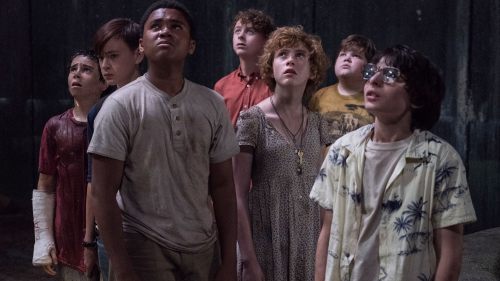Panic Fest Review: SCARY STORIES Is A Spooky Trip Down Memory Lane
Scary Stories to Tell in the Dark is having something of a moment. The 37-year-old compendium of freaky folktales has seen several developments in recent years. This includes the release of the book’s much-maligned 30th anniversary edition (sans iconic Stephen Gammell artwork) and a long-developing movie adaptation (André Øvredal took over directing reins from Guillermo del Toro as of last December).
Scary Stories, a crowdfunded documentary from director Cody Meirick that screened at this year’s Panic Fest in Kansas City, is the latest arrival to the party. The film examines the legacy of author Alvin Schwartz’s infamous three-volume kiddie scarefest, from its influence on the children’s lit canon to its numerous book banning cases in public schools to its modern-day fans. The documentary is a fun nostalgia trip, even if it doesn’t provide much depth.
The documentary splits between three main focuses: the influence of the books on readers, artists and authors, the original’s status as the “most banned book” of the 1990s, and the books’ roots in folklore (Schwartz’s relationship with his family forms an underdeveloped fourth thread). Viewers who grew up devouring creepy mass-market kids’ paperbacks (like me) will be pleasantly surprised by some of the interviews, which include Goosebumps author R.L. Stine, The Bailey School Kids co-author Debbie Dadey and prolific scribe Bruce Coville.
The sections focusing on the book’s many fans are also pretty entertaining, from a Scary Stories-themed show at an art gallery to a woman who sports an impressive sleeve tattoo of Gammell’s terrifying illustrations. Adult fans recount their favorite tales, memories of the pictures that gave them nightmares, and the ways they share their love of the books with their own kids. Flashbacks and re-enactments are depicted via well-rendered animations that evoke Gammell’s sketchy, spectral art.
Less detailed, however, are the parts of the Scary Stories to Tell in the Dark legacy that are actually the most interesting--namely, the stories’ folkloric roots and the personalities of the books’ author and illustrator. Only one interview with an Ozarks-based historian really sheds much light on the historical context of stories like “Wonderful Sausage” (the one where a desperate butcher grinds his wife’s corpse into sausage meat). Meirick’s interview with the historian is enlightening and fun, and there’s not nearly enough content like it in the film.
Schwartz and Gammell themselves also don’t get that much attention--there are some interviews with Schwartz’s family members (the author himself died in 1992), and information compiled from an interview with the reclusive Gammell. There’s also some discussion of Schwartz’s strained relationship with his son. But given the author’s extensive body of work and interest in preserving folklore (he wrote around 24 books in all, most of them compilations of folk tales) it seems like Meirick barely scratches the surface.
Overall, Scary Stories is a diverting reminder of why Alvin Schwartz’s books of spooky lore have remained so popular over the years. Bringing up recollections of childhood thrills and chills serves to remind viewers of the books’ timelessly spooky tales and memories of scouring school library shelves for additional nightmare fuel. However, there is untapped potential in exploring the actual behind-the-scenes of both the books’ creators and the stories’ historical roots. It leaves this doc feeling fairly unremarkable, when it could have been something more.



